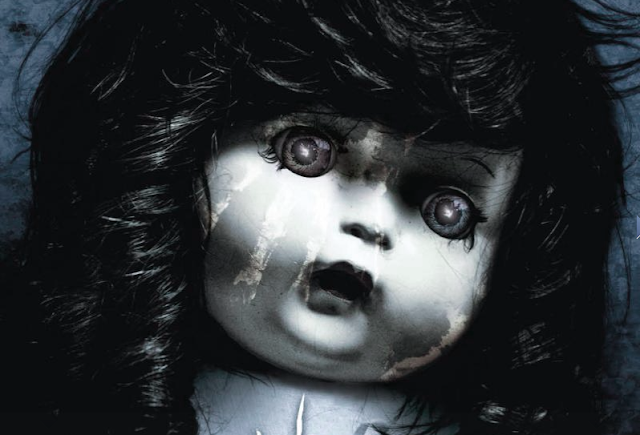Diverse Middle Grade Reads: Somewhere Among and Half and Half
This month I’ve made it my goal to seek out POC led middle-grade and young adult books. Specifically books where women & girls of cover both feature on the covers and as a main character.
Both middle-grade books featured here have half-Asian, half-white preteen girl protagonists so I’ve decided to put them together in this one post. It was a happy cosmic coincidence that Half and Half fell into my hands (literally!) and was returned in the library drop box where I work, right as I just finished Somewhere Among.
********
Somewhere Among by Annie Donwerth-Chikamatsu
Synopsis from Goodreads:
Ema lives somewhere among two countries, two languages, two time zones, and emotions she didn’t know could exist together. The bliss of awaiting a new baby, the worry of moving to new a home with grandparents, Jiichan and Obaachan, as different as the sun and moon and the dread of starting a new school. Then, on September 11th 2001 the whole universe seems to stop. Everyone is living somewhere among chaos, fear, loneliness. And Ema finds somewhere inside herself the one thing that can never stop: hope.
That summary conjures up an image of Somewhere Among as a bento box full of meticulously arranged and crafted food, carefully wrapped up in a patterned cotton cloth. Instead, Somewhere Among is more like a small mound of brown rice on a plate. It’s steamy and tasty enough, but as is it’s only an unseasoned side dish.
Most of this comes from the voice Donwerth-Chikamatsu uses. Somewhere Among is written in verse that seems like it was written by someone with only a basic understanding of what writing in verse means. There’s not much rhythm or structure to the way the way the narrative is told.
Relying on sentence fragments and frequently pauses doesn’t make it poetic. Nor does repeatedly pressing the enter bar to have:
a little bit
of text on
each
line
Yes, there’s a plot, but it’s delivered to us in a way that’s slow and almost stagnant. Like a soda an hour after it’s top is popped open, Somewhere Among has lost its fizz and gone flat. What’s confusing is that SO much can happen with the plot focusing on September 11th AND the 60th anniversary of Pearl Harbor in Japan.
So what gives? Where does Somewhere Among stray?
One of Somewhere Among’s shortcomings is its characters. While the characters aren’t entirely directionless, they are underdeveloped. Ema, Obaachan and Jiichan are the most rounded of the bunch but they’re still not entirely dimensional. Ema is a quiet and withdrawn girl so being in her headspace is a more muted experience and it saps the energy out of the writing.
I have to say despite the character development issues the relationship between Ema and Obaachan is very well-written. Ema is perpetually uncomfortable around Obaachan and the tension between the two is obvious in all of their interactions.
Yes they’re biological related but it’s very strained. But Obaachan isn’t vilified as some wicked grandmother. Just a woman who has rigid views and high expectations and a need for control and perfection. I appreciate that mature tone.
Culturally, Somewhere Among does acknowledge Ema’s Japanese roots and I LOVE the emphasis on it. It’s this that led me to bump Somewhere Among up half a star rating. We see some of the holidays observed in Japan and see the tentativeness and forced politeness of her Obaachan that comes from her background and status as an elderly Japanese woman.
Somewhere Among largely falters with plot. that’s promised to us is as skinny and prone to snapping as disposable wooden chopsticks. Most of it is Ema going about her daily life: chores, school, watching tv. Somewhere Among is a middle-grade book after all so it makes sense that Donwerth-Chikamatsu wouldn’t want to overwhelm the reader...butttt still it’s not quite enough.
References to September 11th and the Pearl Harbor anniversary are vague and nondescript. As an adult I get the sense that Donwerth-Chikamatsu doesn’t completely trust her readers to understand and that she’s holding back. It’s because of that Somewhere Among suffers.
What I find a tad bizarre about Somewhere Among is that Ema is simultaneously oblivious AND freaked out about the terrorist attack despite never having been to NYC. It could’ve been far more unnerving and brought more of an impact to the narrative if Ema’s American Gramps and Nana lived in New York state.
Somewhere Among is a decent enough novel. But it doesn’t go the distance and crossover various age lines. It’s a middle-grade intended purely for children. The prose is relatively lifeless, the characters so-so, and the captivating plot that’s promised to us is instead as skinny and prone to snapping as disposable wooden chopsticks.
Recommended?: Yes, for children 8 to 12 years old.
********
Half and Half by Lensey Namioka
Synopsis from Goodreads:
Fiona Cheng is half and half: Her father is Chinese and her mother is Scottish. Fiona looks more like her father than her mother, so people always expect her to be more interested in her Chinese half than her Scottish half. Lately even Fiona is confused about who she really is.
Let’s get this out of the way first. Five seconds of me being a judgy jerk: this book’s cover is a turn off. The art is clunky and bizarre. Not to mention a bit creepy. I actually wasn’t sure if I would read this after all, but as fate would have it it wound up in my hands a day after seeing it on Goodreads and finishing Somewhere Among. I couldn’t pass up what the universe sent my way! So judgy moment over, don’t let the off putting cover deter you from what is a gentle and simple story.
 “Normally I didn’t mind looking Chinese. But now I was very conscious that I didn’t belong. I felt like a prune in a bowl of strawberries.”
“Normally I didn’t mind looking Chinese. But now I was very conscious that I didn’t belong. I felt like a prune in a bowl of strawberries.”
Half and Half is embroidered with symbols and themes are simple and straightforward for even the youngest of readers. Identity is the biggest focus; the story starts off after all with Fiona’s struggle with her rec center dance class form. White? Asian? She doesn’t know what box to check on the application and feels “weird” selecting “other”.
It’s when both “halves” of Fiona’s family -- Grandpa and Grandma MacMurray, and Nainai -- comes together to celebrate the local Cultural Festival that Fiona feels more insecure about her mostly Chinese appearance and desperately seeks connection to her Scottish heritage.
Envious of her brother Ron’s reddish hair and his invitation to perform in a dance with Grandpa MacMurray’s students while wearing authentic Scottish garb in the Cultural Festival, Fiona laments looking so Chinese. When she suddenly gets the opportunity to take Ron’s place in the troupe she feels right for one of the first times in her life. Wearing a kilt and sporran anchors Fiona to her Highlander heritage in a way she never had been before, it makes her feel more connected to her other “half”.
Half and Half’s message of belongingness while also embracing what makes us different is universal and doesn’t have a set expiration date.
Although because this book hit shelves fifteen years ago (in 2003) some of it feels very dated. Especially the simple look at gender. Ron, who’s insecure about his short stature loves kung fu and karate because his height doesn’t matter as much. He scoffs at dancing. Wearing a kilt WHILE dancing will make him the ultimate “sissy”.
Another shortcoming is how Half and Half relies A LOT on telling versus showing. Details are few and scattered. Instead we’re given long explanations and contrived dialogue. This may be Namioka’s deliberate choice and way of speaking to her very young intended audience But it makes reading Half and Half less of an experience. Many of the conversations between characters are so polished and even meticulous they don’t t seem natural.
Half and Half is best for readers younger than 11. There’s not nearly enough complexity to appeal to teen and adult readers. It’s sugary sweet, and extremely gentle tale about discovering and embracing our identities. Fiona’s relationship with her grandparents adds depth to Half and Half. It reinforces we can be ALL instead of limiting ourselves to one or the other is simple and non-threatening. For sensitive children it’s a way to reassure them and start up a conversation about who they are and encourages them to change their thinking, especially with passages like:
“I glanced at Grandpa, who was fiddling away. Occasionally he glanced at Ron and beamed happily as he watched his laddie treading the steps of the dance. Grandpa didn’t notice that Ron wasn’t enjoying himself. In his eyes, this was his redheaded grandson doing a Scottish dance, at last.
In Nainai’s eyes, I was a graceful, modest, little Chinese maiden- even with my [dyed] orange hair. I guess our folks see what they want to see.”
Recommended?: Yes, for children 11 or younger.
If you want a more descriptive book like this with a more substantial plot try The Blossoming Universe of Violet Diamond by Brenda Woods.








Comments
Post a Comment